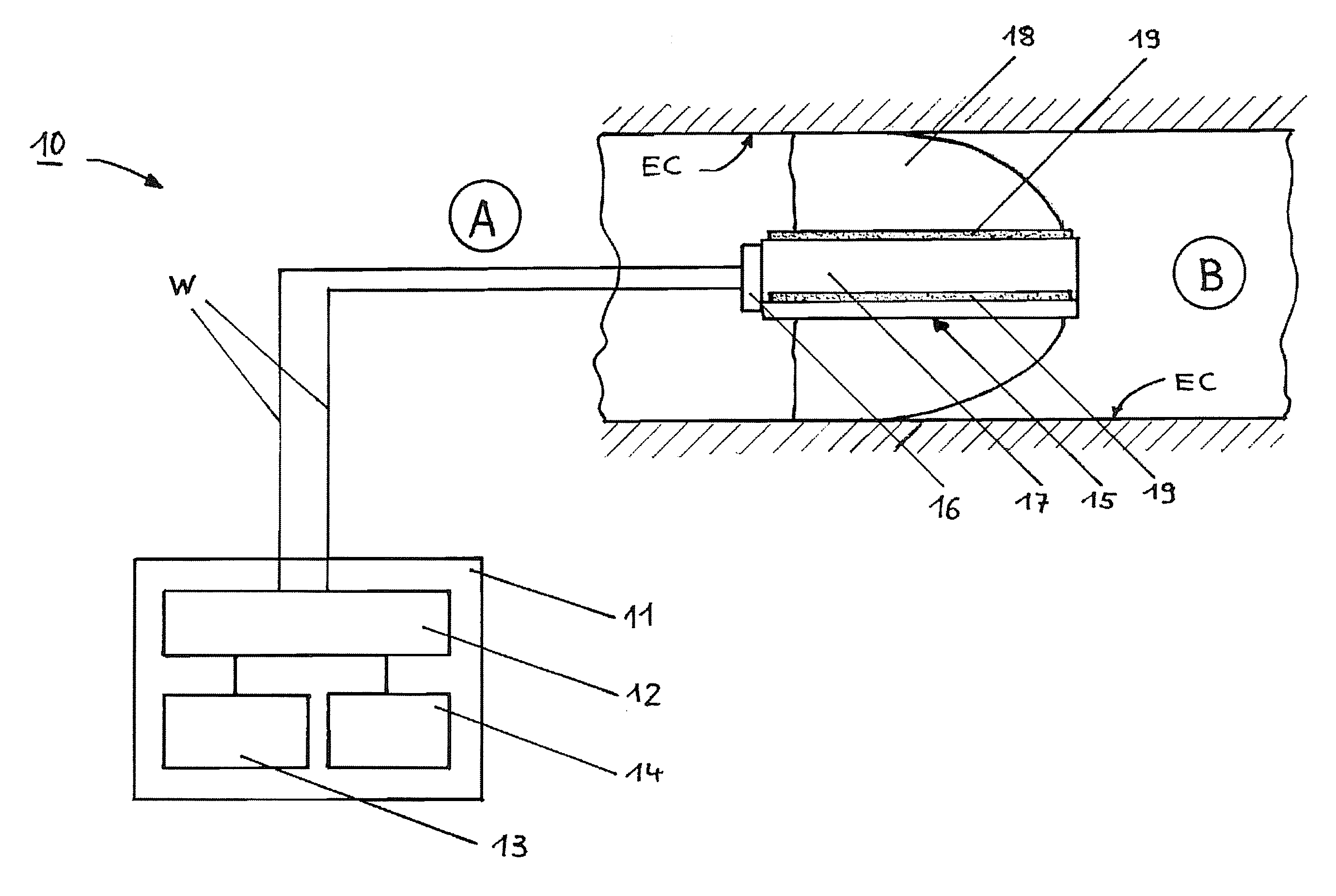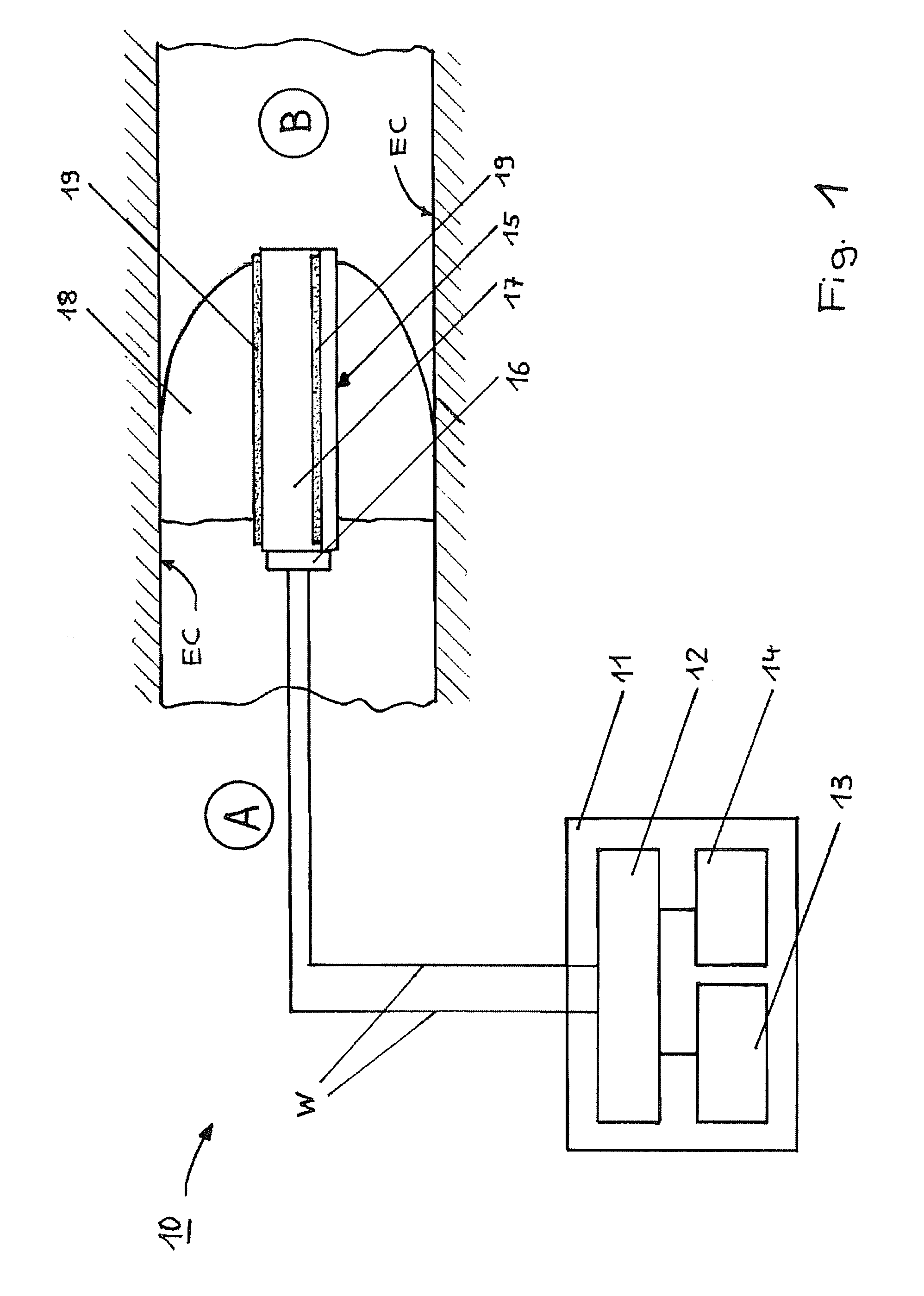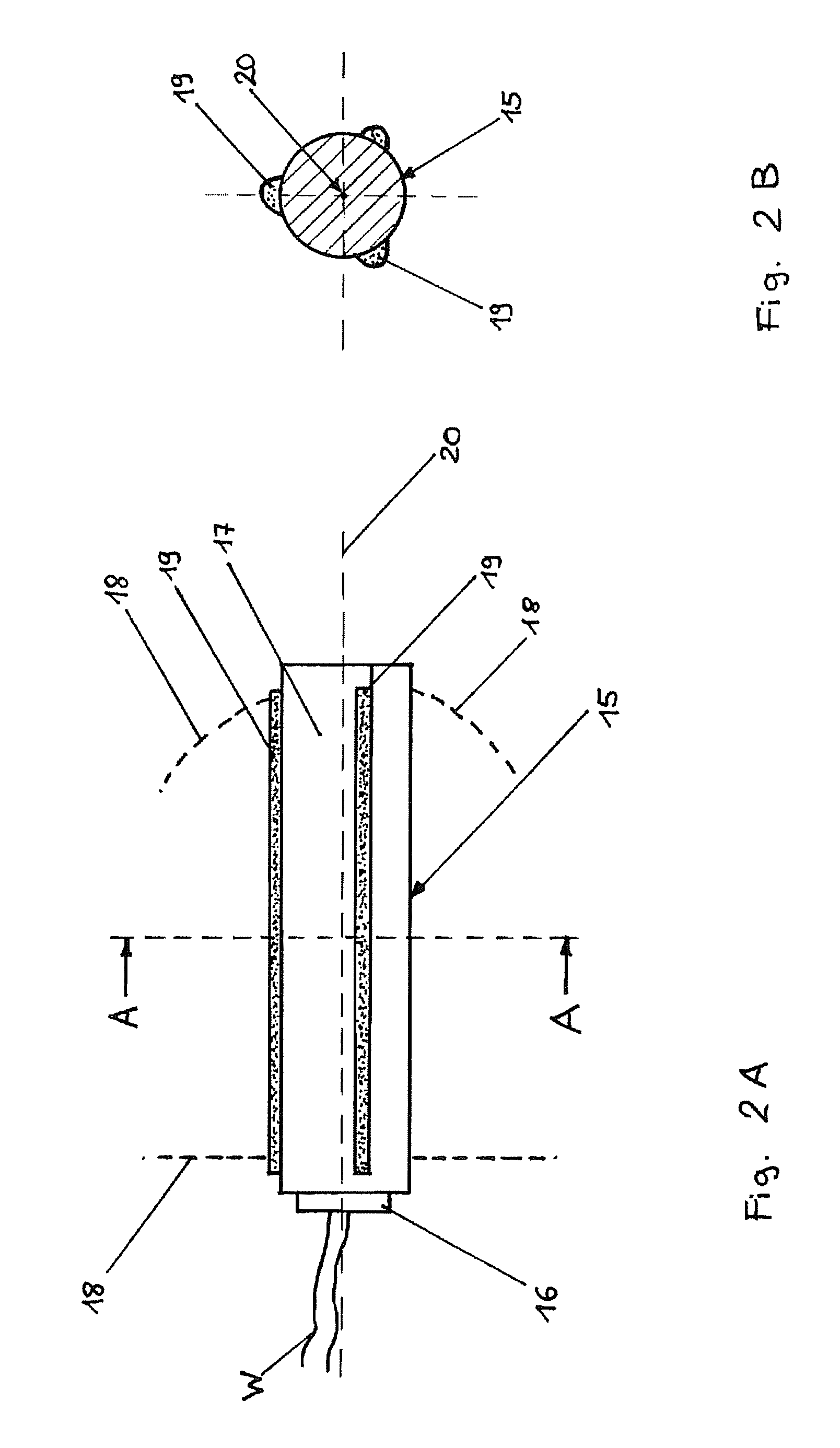Hearing device comprising a mould and an output module
a technology of output module and hearing device, which is applied in the direction of hearing aid vents, deaf-aid sets, electric devices, etc., can solve the problems of reducing the flexibility of hearing aid manufacturing, undesired feedback effect, and reducing comfort for users, so as to increase the feedback margin, and reduce the occlusion
- Summary
- Abstract
- Description
- Claims
- Application Information
AI Technical Summary
Benefits of technology
Problems solved by technology
Method used
Image
Examples
first embodiment
[0035]The present invention is described in the following in conjunction with the schematic diagram of FIG. 1 showing an overall view (cross-sectional view in part) of the structure and arrangement of a hearing device 10 according to the first embodiment of the present invention. The hearing device 10 comprises three separate physical bodies, 1) circuitry unit 11, 2) mould 18 and 3) output module 15 mounted in a through-going opening of the mould, the circuitry unit and the output module being electrically connected. The circuitry unit 11 can e.g. form part of a module located behind the ear of a user.
[0036]According to the representation shown in FIG. 1, the hearing device 10 comprises a casing, (shell) at least enclosing electronic circuitry providing a signal processing unit of the hearing device. The electronic circuitry comprises a circuitry unit 11 comprising a central control unit 12 (controller) that controls the hearing device 10 to be worn by the user. The central control ...
second embodiment
[0077]Based on the representation of FIGS. 4A and 4B a second embodiment of the present invention is described in the following.
[0078]Elements and means shown in FIGS. 4A and 4B which have already been described in conjunction with the first embodiment and which are shown in any of the preceding Figures (FIGS. 1 to 3) and which have the same function are provided with the same reference number, and a further detailed explanation thereof is omitted.
[0079]FIG. 4A, which is a cross-sectional view, shows the arrangement of an output module 15 in a mould 18, the output module including a housing 17 in which a receiver is accommodated. Electric wires W provide a connection of the output module to a circuitry unit 11 (not shown in FIG. 4, see FIG. 1). The circuitry unit 11 according to the second embodiment has the same function as that of the first embodiment, and a further description is therefore omitted.
[0080]FIG. 4A further shows that the output module 15 is inserted into a portion (w...
PUM
 Login to View More
Login to View More Abstract
Description
Claims
Application Information
 Login to View More
Login to View More - R&D
- Intellectual Property
- Life Sciences
- Materials
- Tech Scout
- Unparalleled Data Quality
- Higher Quality Content
- 60% Fewer Hallucinations
Browse by: Latest US Patents, China's latest patents, Technical Efficacy Thesaurus, Application Domain, Technology Topic, Popular Technical Reports.
© 2025 PatSnap. All rights reserved.Legal|Privacy policy|Modern Slavery Act Transparency Statement|Sitemap|About US| Contact US: help@patsnap.com



